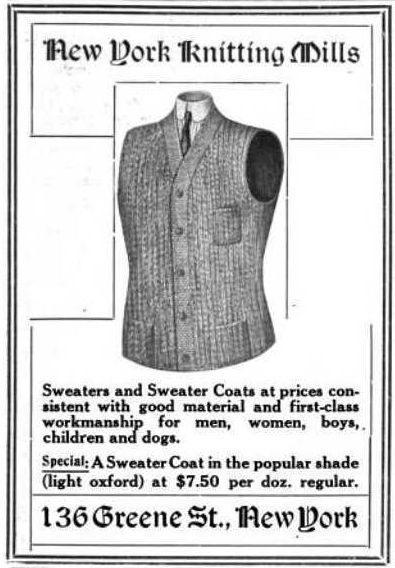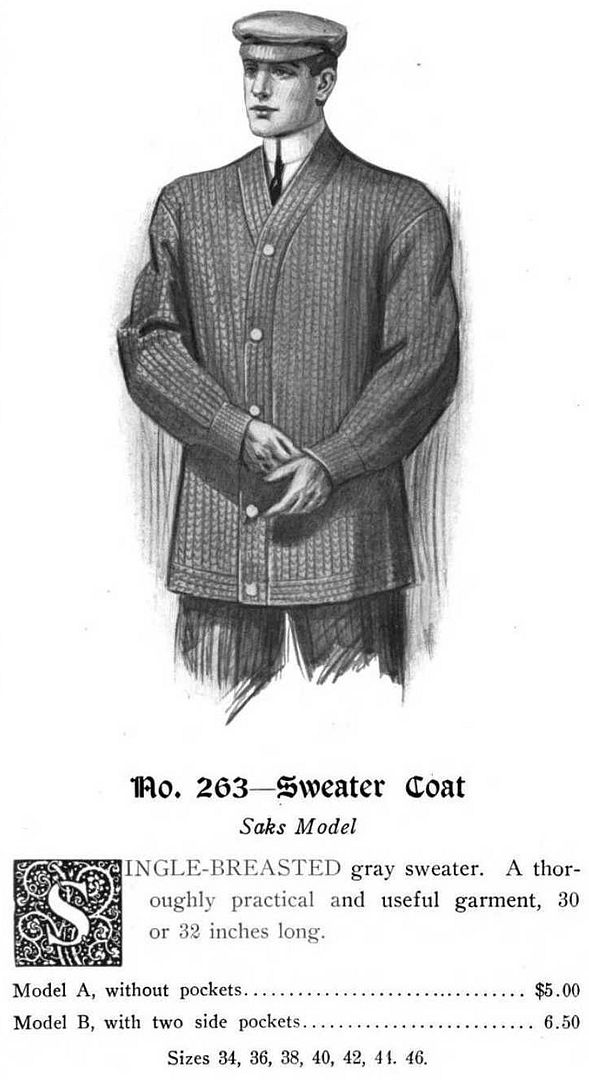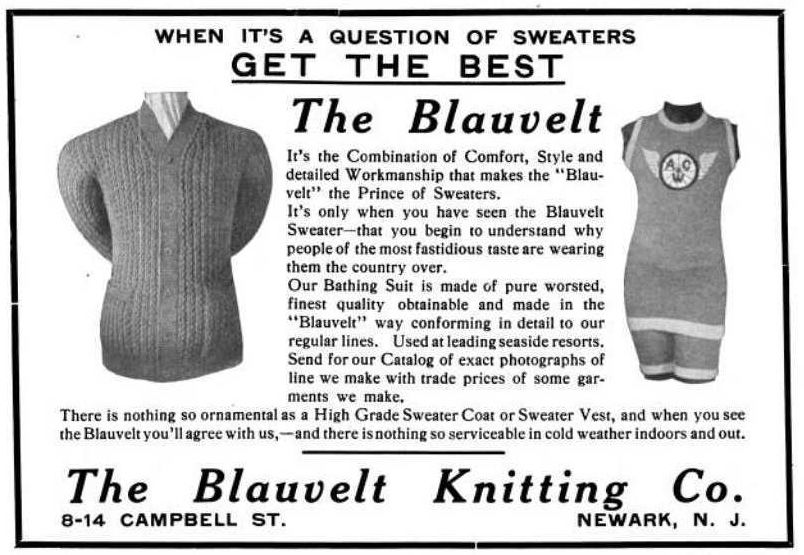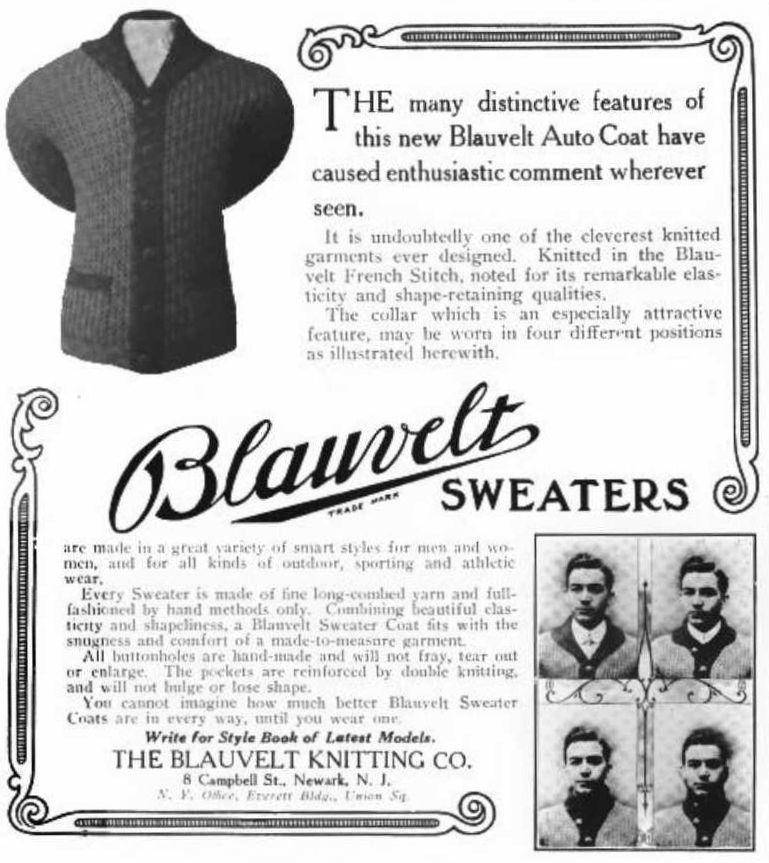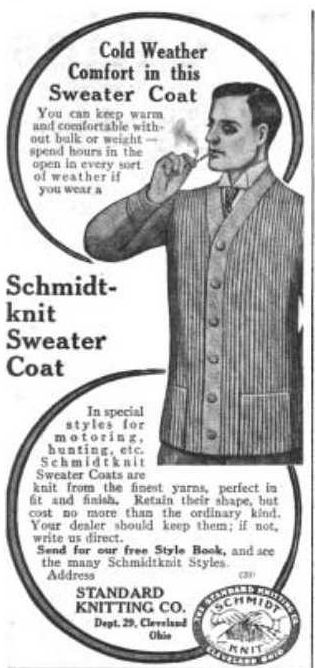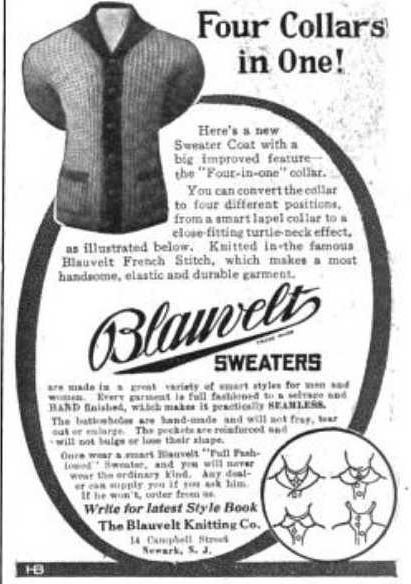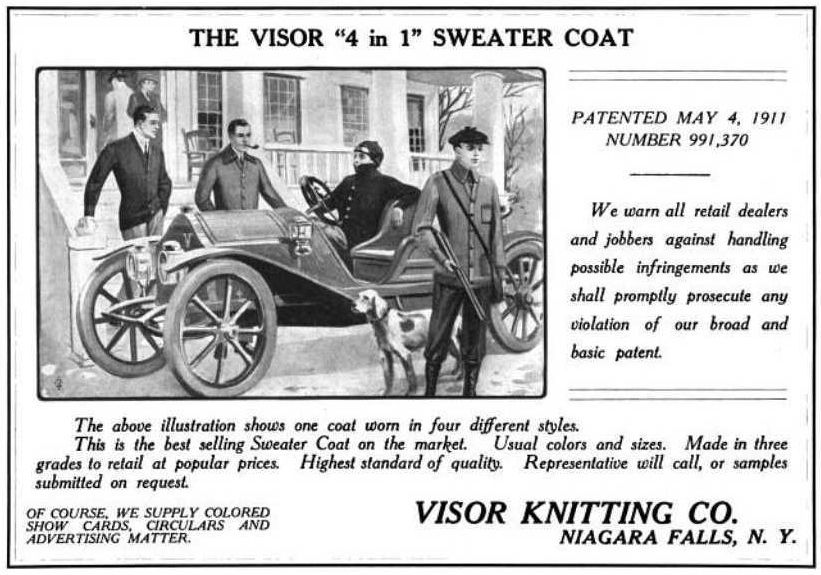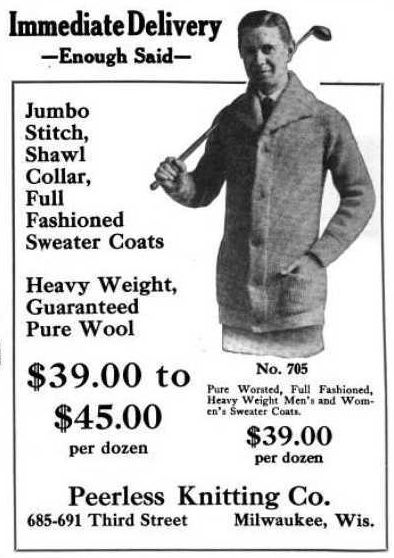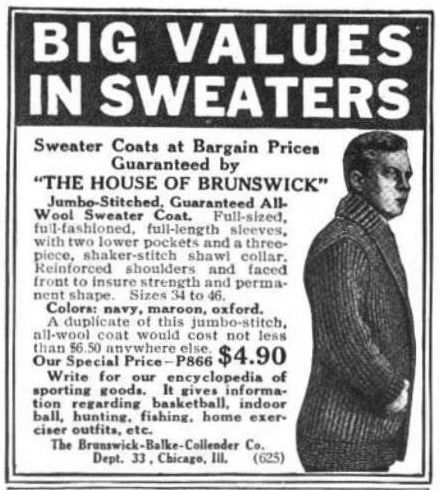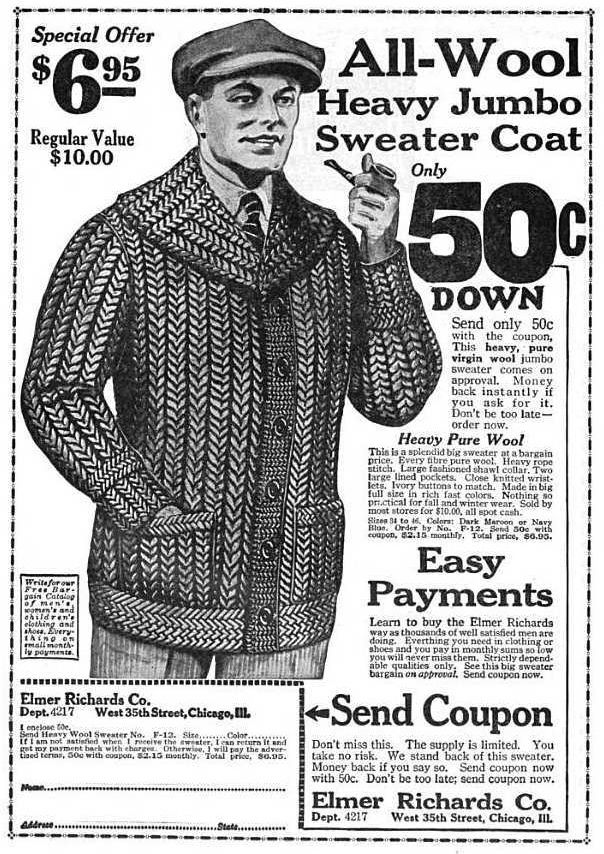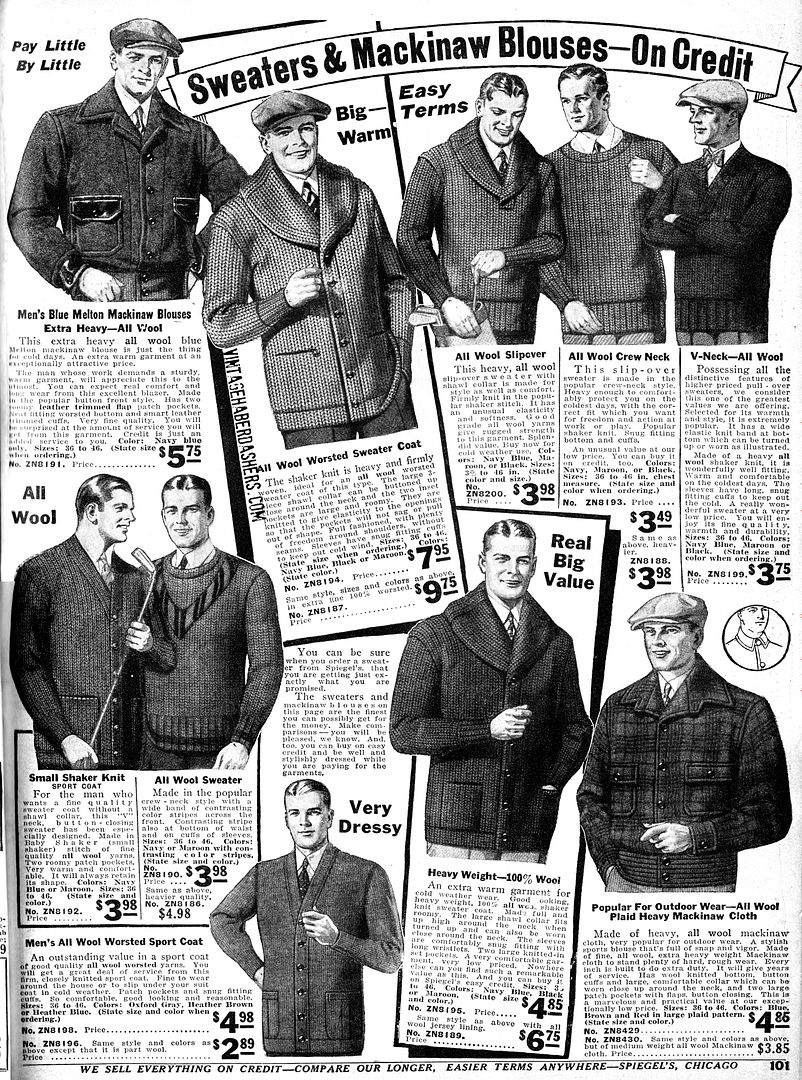- Messages
- 10,562
- Location
- Bozeman, MT
The cardigan can trace its name back to James Brudenell, 7th Earl of Cardigan, who lived from 1797 to 1868, and is best known for leading the Charge of the Light Brigade. American advertisements for knit "Cardigan Jackets" can be found back into the 1850s.
A description of the "Cardigan Jacket" from 1867 is recognizable as essentially the same garment as is worn today.
"This jacket is named after the British officer who led the charge of the Light Brigade at Balaclava it is knitted of worsted, or crocheted of Berlin wool, and your sister or cousins can make it, or they are not half as accomplished in the useful and ornamental arts as I take them to be. It is simply a jacket to fit the figure, long enough to come down over the hips; it buttons down the front, and the sleeves are tight at the wrists, which is a great point towards keeping you warm. These jackets may be seen in the stores, but the price is very high, except for poor, short things, ended soon after they were begun." (source)
An 1892 description gives a different origin of the name.
"Cardigan Jacket. A coarse, heavy, rib-knitted worsted or cotton jacket for men's and boy's wear, deriving its name from the town of Cardigan, Cardigan Country, England, 240 miles north-west of London. A "size" in cardigan jackets is 2 inches, the numbers ranging from 1 small to 7 large, being equivalent to 34 to 46."
The same publication draws the distinction between a cardigan and a sweater, defining a sweater as a "very thick cardigan jacket, made of extremely coarse yarn, and felted so much as to make it very warm, thick and comfortable for the coldest climate".
By the 1890s, at the very latest, sweaters like this had moved past the point of expensive hand-knits to factory production. An 1896 source describes the "Cardigan Jacket Machine: A circular rib knitting machine, making the polka or one-and-one stitch, for making Cardigan Jackets, etc."
Around 1906, the predominant trade name shifted from "Cardigan Jacket" to "Sweater Coat" or "Coat Sweater". Trade journal articles acknowledge that despite the re-branding, the actual product is nearly identical to the cardigan jackets of the 19th century. Advertisers of this new generation of sweater coats pushed firmly against makers of pullover sweaters, especially roll-collar fisherman types, describing the collars as "unhygeinic", as "not a thing of beauty", as "clumsy", and as "undoubtedly the cause of. . . sore throats during the cold weather". Though all these claims are dubious at the very best, the button front sweater took off in a big way shortly thereafter, sold in both "v-neck" and shawl collar styles, single and double breasted, and with or without sleeves.
These chunky shaker-knit shawl collar models were worn as outerwear. They were popular in outdoors applications (hunting, hiking, camping) because they were lightweight compared to a comparable melton coat, and allowed for a free range of motion. They quickly caught on in other casual environments where these qualities were prized, as workwear, and with athletes.
A description of the "Cardigan Jacket" from 1867 is recognizable as essentially the same garment as is worn today.
"This jacket is named after the British officer who led the charge of the Light Brigade at Balaclava it is knitted of worsted, or crocheted of Berlin wool, and your sister or cousins can make it, or they are not half as accomplished in the useful and ornamental arts as I take them to be. It is simply a jacket to fit the figure, long enough to come down over the hips; it buttons down the front, and the sleeves are tight at the wrists, which is a great point towards keeping you warm. These jackets may be seen in the stores, but the price is very high, except for poor, short things, ended soon after they were begun." (source)
An 1892 description gives a different origin of the name.
"Cardigan Jacket. A coarse, heavy, rib-knitted worsted or cotton jacket for men's and boy's wear, deriving its name from the town of Cardigan, Cardigan Country, England, 240 miles north-west of London. A "size" in cardigan jackets is 2 inches, the numbers ranging from 1 small to 7 large, being equivalent to 34 to 46."
The same publication draws the distinction between a cardigan and a sweater, defining a sweater as a "very thick cardigan jacket, made of extremely coarse yarn, and felted so much as to make it very warm, thick and comfortable for the coldest climate".
By the 1890s, at the very latest, sweaters like this had moved past the point of expensive hand-knits to factory production. An 1896 source describes the "Cardigan Jacket Machine: A circular rib knitting machine, making the polka or one-and-one stitch, for making Cardigan Jackets, etc."
Around 1906, the predominant trade name shifted from "Cardigan Jacket" to "Sweater Coat" or "Coat Sweater". Trade journal articles acknowledge that despite the re-branding, the actual product is nearly identical to the cardigan jackets of the 19th century. Advertisers of this new generation of sweater coats pushed firmly against makers of pullover sweaters, especially roll-collar fisherman types, describing the collars as "unhygeinic", as "not a thing of beauty", as "clumsy", and as "undoubtedly the cause of. . . sore throats during the cold weather". Though all these claims are dubious at the very best, the button front sweater took off in a big way shortly thereafter, sold in both "v-neck" and shawl collar styles, single and double breasted, and with or without sleeves.
These chunky shaker-knit shawl collar models were worn as outerwear. They were popular in outdoors applications (hunting, hiking, camping) because they were lightweight compared to a comparable melton coat, and allowed for a free range of motion. They quickly caught on in other casual environments where these qualities were prized, as workwear, and with athletes.
Last edited:
